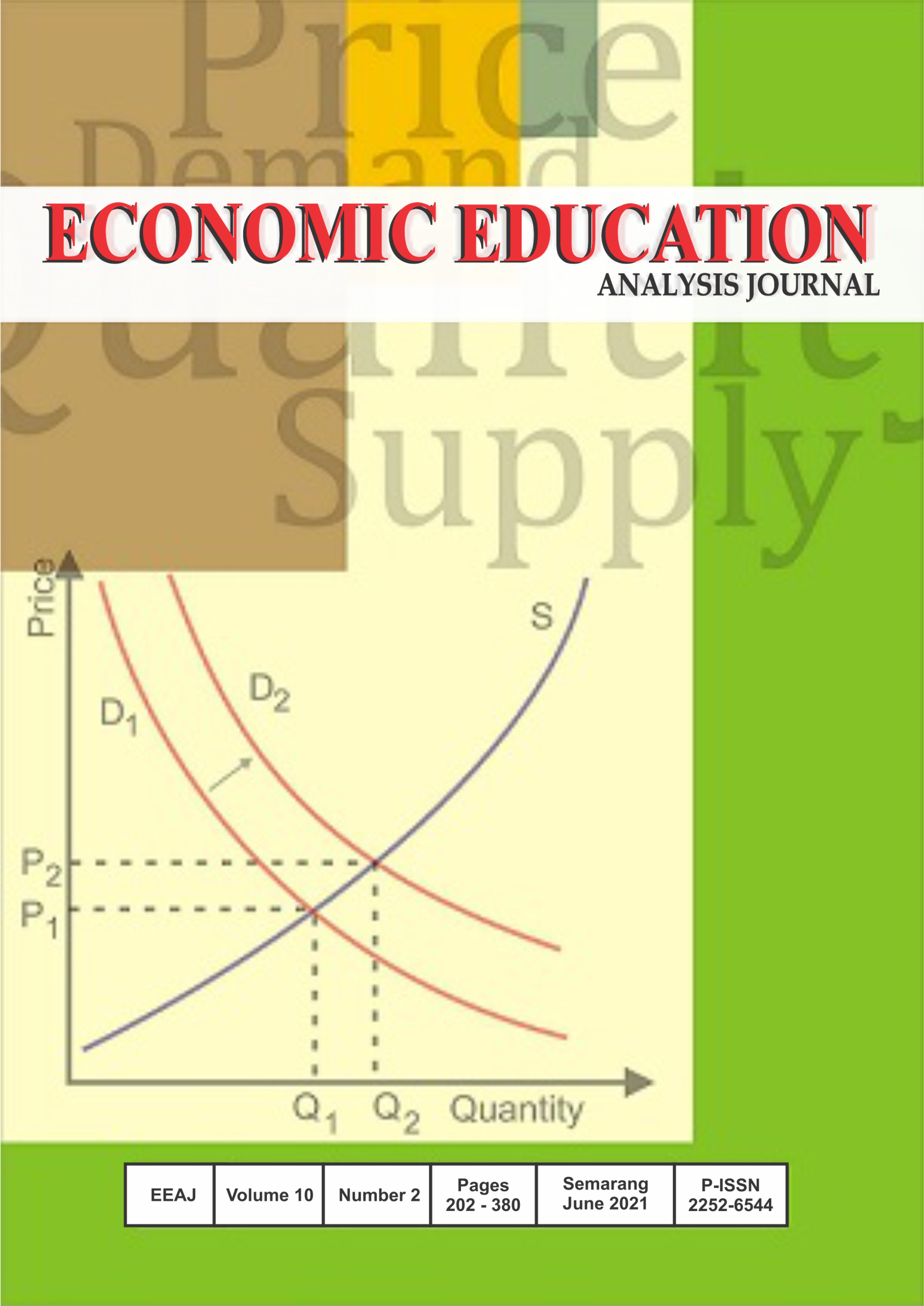Effectiveness of Think-Pair-Share Learning Model on Students' Creativity and Critical Thinking Ability
Main Article Content
Abstract
This study aimed to measure students' creativity and critical economic thinking skills. The method was Quasi Experimental Design withNonequivalent control group design. The sampling process used purposive sampling technique and obtained 2 classes, namely class X IPS 3 as an experimental class using cooperative learning model of Think-Pair-Share and class X IPS 4 as a control class using Expository learning model. The variables in this study were creativity, critical thinking skills, and Think-Pair-Share cooperative learning. The results of the analysis of the effectiveness of the experimental class learning with the Think-Pair -Share learning model showed that the average final test result for the control class was 65.14 and the experimental class was 82.39 and obtained an N-Gain score of 0.58 in the moderate category, the Sig. (2-tailed) value of 0.000 <0.05 through the Paired sample t-test, it can be concluded that there was a difference in the average critical thinking ability of students in the economy. The results of the analysis of the student creativity sheet showed that the percentage of students' creativity in the experimental class was 86.00% with the very creative category and the control class was 55.80% with the quite creative category. This showed an increase in creativity and the ability to think critically in economic subjects, management materials using Think-Pair-Share learning model was more effective than using expository learning in class X IPS at SMA Negeri 1 Rembang, Purbalingga Regency.
